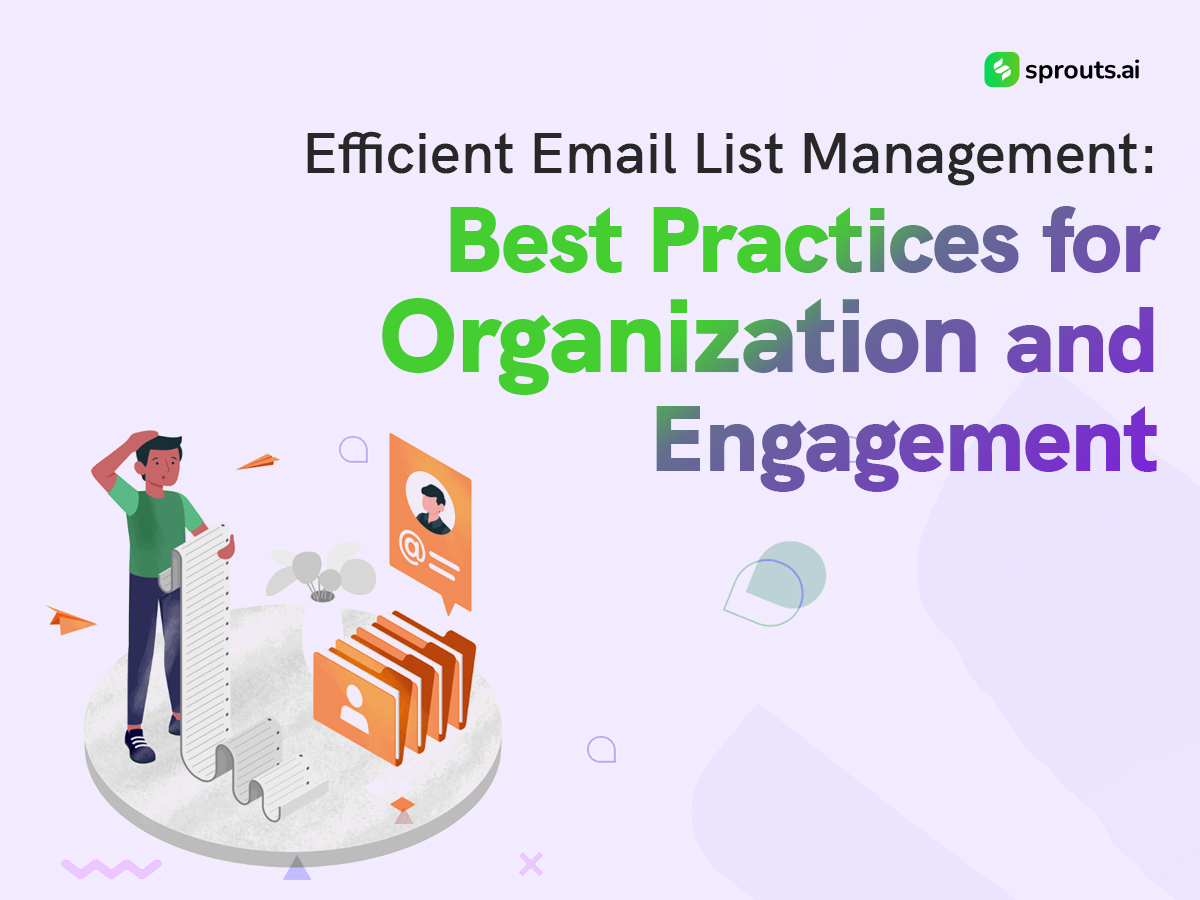Email remains a powerful tool for connecting with your audience. However, the effectiveness of your email marketing campaigns is linked to the quality of your email list and how you manage it. In this blog, we’ll learn the art of efficient email list management, exploring best practices for email list management for organization and engagement that can help you make the most out of your email marketing efforts.
Start with a Clean Slate
Begin your email list management journey by thoroughly auditing your existing list. Remove inactive and invalid email addresses to improve deliverability and open rates. Maintaining a clean list is essential to ensure your emails reach the right inboxes.
Segmentation is Key
Segmentation is a game-changer in email marketing. Divide your email list into smaller, more targeted groups based on demographics, purchase history, or engagement level. This allows you to send tailored content to each segment, increasing the relevance and effectiveness of your emails.
Capture Relevant Data
When collecting email addresses, aim to gather additional relevant data about your subscribers. This can include their preferences, interests, and purchase history. The more you know about your subscribers, the better you can tailor your emails to meet their needs and interests.
Consent-Based Opt-In
Ensure everyone on your email list has opted in to receive your emails. This helps you comply with email marketing regulations like GDPR and ensures that your subscribers genuinely want to hear from you. Avoid purchasing email lists, as these often lead to low engagement and spam complaints.
Implement Double Opt-In
Consider implementing a double opt-in process, where subscribers confirm their subscription by clicking a verification link sent to their email. This extra step ensures your list is filled with genuinely interested individuals and reduces the likelihood of fake or mistyped email addresses.
Regularly Update and Cleanse
Email list management is an ongoing process. Regularly update your list by removing unsubscribers and bouncing email addresses. This will not only improve the accuracy of your data but also maintain a healthy sender reputation.
Personalization and Customization
Personalization goes beyond just addressing subscribers by their first name. Use your collected data to personalize the content and offers in your emails. Subscribers are more likely to engage with emails that resonate with their preferences and needs.
Email List Verification Services
Consider using email list verification services to check the validity of email addresses on your list. These services can identify and remove invalid, disposable, or temporary email addresses, ensuring your emails reach real people.
A/B Testing
Conduct A/B tests on different elements such as subject lines, sender names, and content to optimize your email campaigns. This lets you identify what resonates best with your audience and refine your email marketing strategy accordingly.
Mobile Optimization
With the increasing use of mobile devices, ensuring that your emails are mobile-responsive is crucial. Test your emails on various devices to guarantee they display correctly and are easily read on smartphones and tablets.
Timing is Everything
The timing of your emails can significantly impact their open and click-through rates—experiment with different sending times to determine when your audience is most active and responsive. Consider time zones if your subscribers are spread across different regions.
Engage and Provide Value
Don’t bombard your subscribers with constant promotional emails. Instead, focus on providing value through informative content, exclusive offers, and helpful tips. Engaging your audience with valuable content will keep them interested and more likely to stay subscribed.
Monitor Engagement Metrics
Regularly monitor key email marketing metrics such as open, click-through, and unsubscribe rates. Analyze the data to gain insights into what’s working and needs improvement in your email campaigns.
Re-Engagement Campaigns
Consider running re-engagement campaigns for subscribers who haven’t engaged with your emails in a while. Offer incentives or ask for feedback to rekindle their interest in your brand.
Respect Unsubscribe Requests
Always honour unsubscribe requests promptly. Not only is this a legal requirement, but it also helps maintain a positive reputation with email service providers.
Compliance with Regulations
Stay up to date with email marketing regulations in your region and target markets. Complying with laws like GDPR and CAN-SPAM protects your brand and builds trust with your subscribers.
Efficient email list management is the cornerstone of successful email marketing campaigns. Following these best practices for email list management ensures that your email list remains organized, engaged, and responsive. Remember that email marketing is not just about sending messages; it’s about building relationships and providing value to your subscribers. Thoughtfully managing your email list is a crucial step in achieving those goals.

